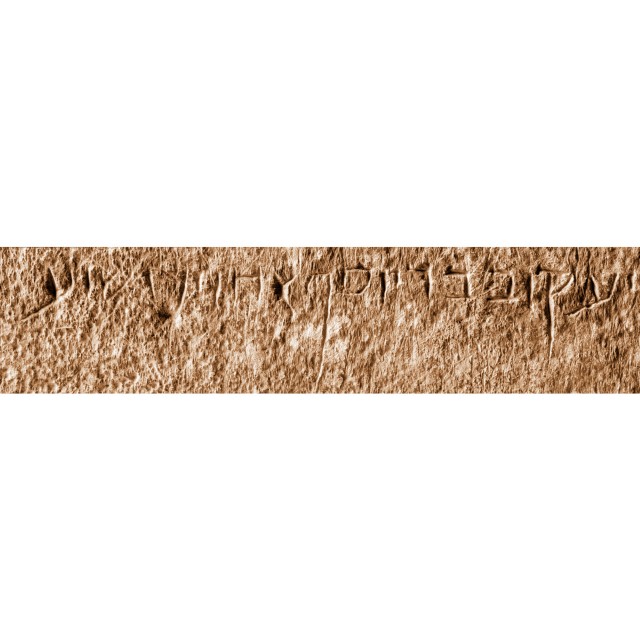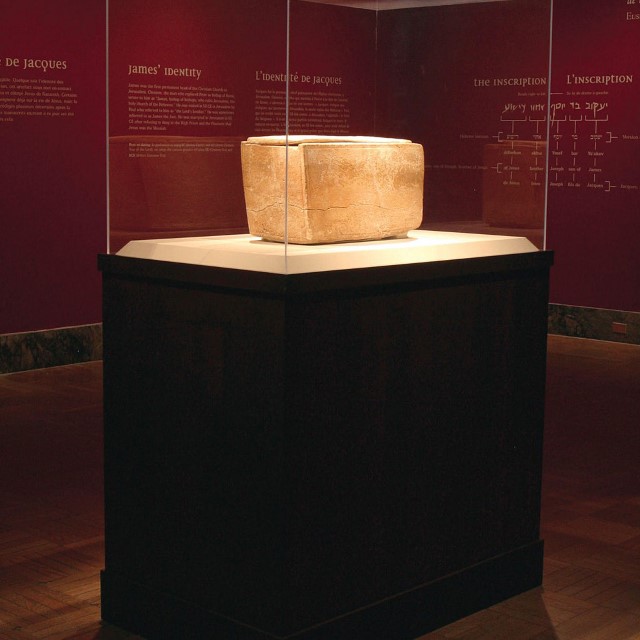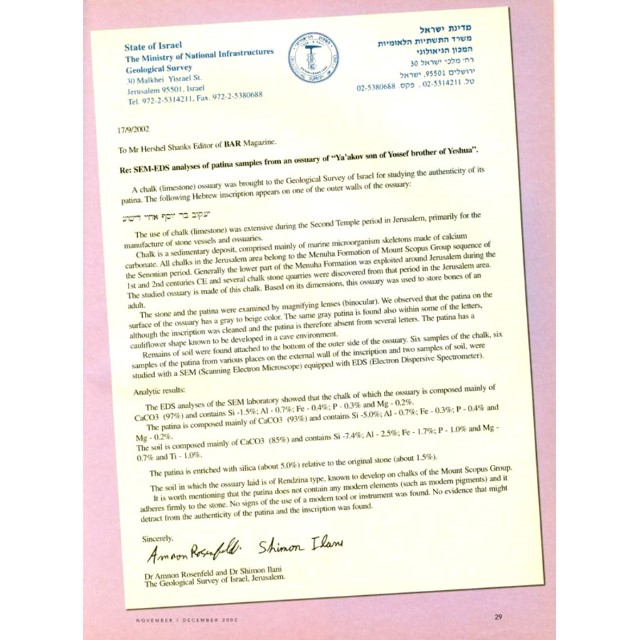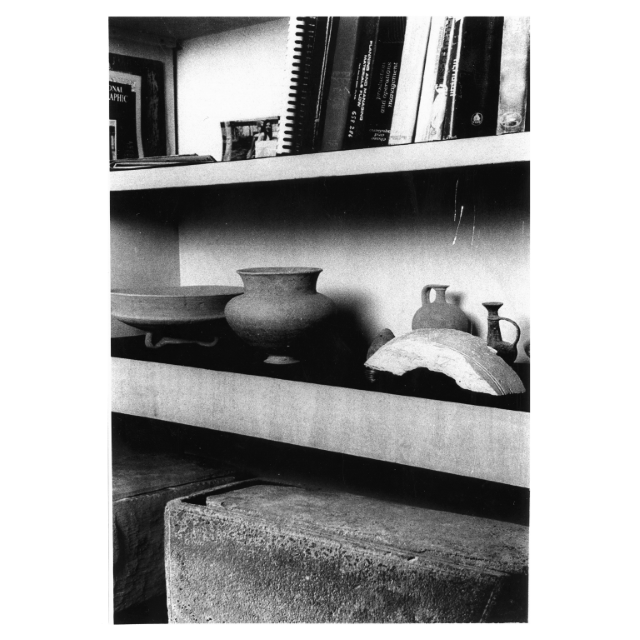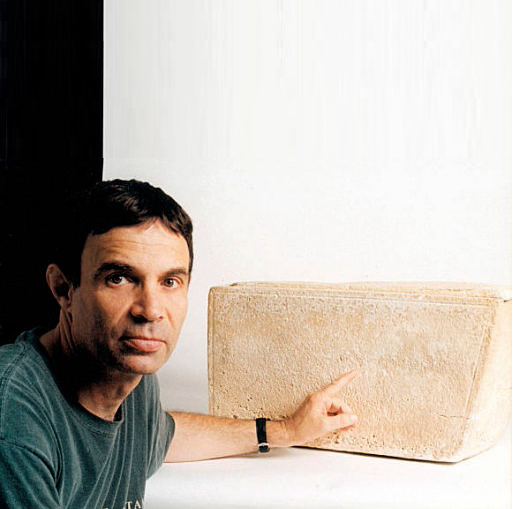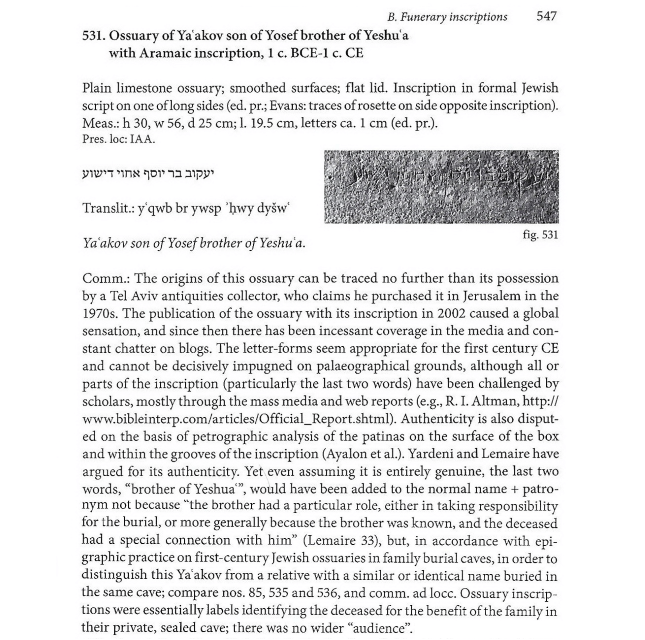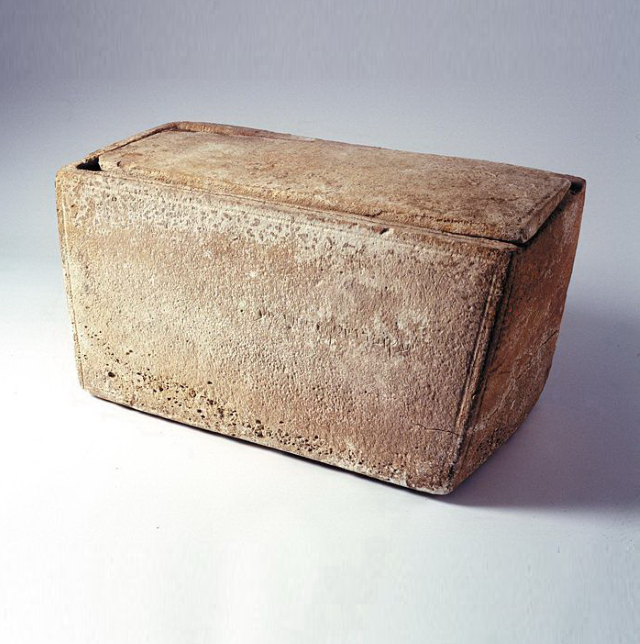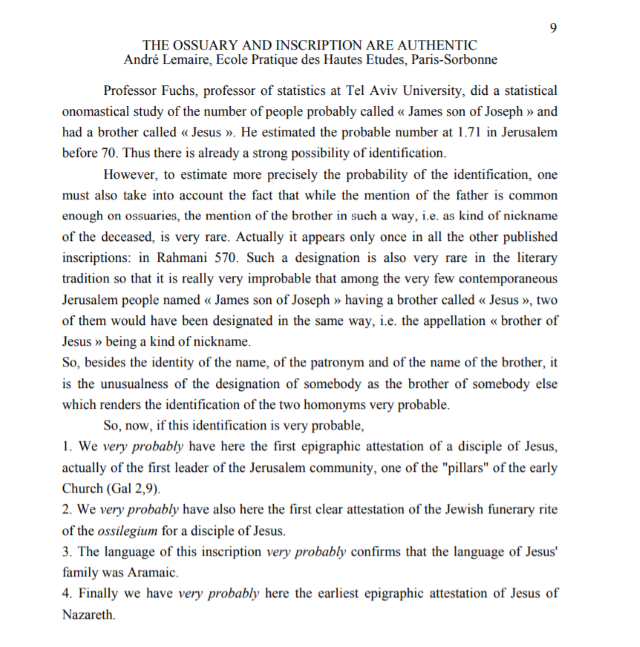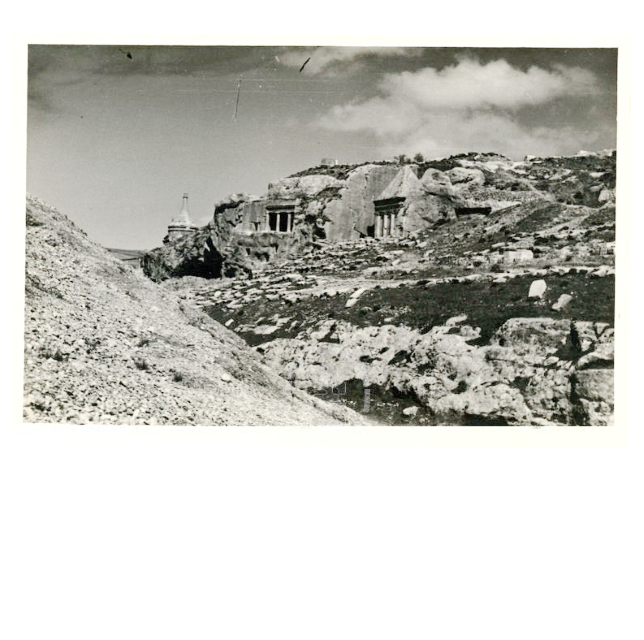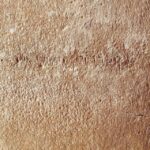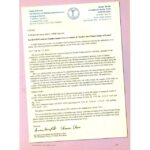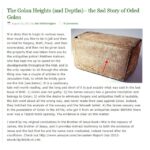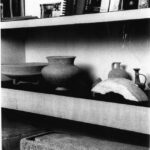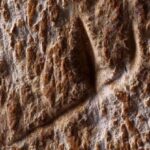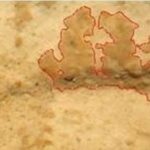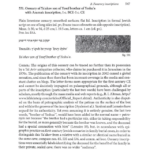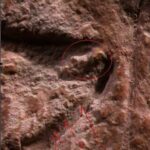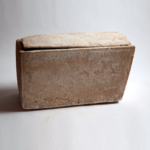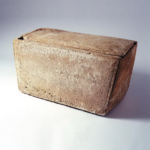The “James Ossuary”. A limestone ossuary inscribed in Aramaic : “Ya’akov Bar Yosef Achui DeYeshua””= Yaakov, son of Joseph, brother of Yeshua (Jesus). Attributed to “James the Just”, the brother of Jesus of Nazareth who is mentioned several times in the New Testament as well as by the Roman historian Josephus Flavius.
Site item id
18013
Collection name
Item period
The James Ossuary
A first century AD limestone ossuary (bone-box) with an Aramaic inscription "Ya'akov Bar Yosef Achui DeYeshua" (= Ya'akov, son of Joseph, Brother of Jesus). It was discovered, according to the antiquity dealer who sold it during the 1970s, in the Kidron Valley at Silwan (East Jerusalem).
The ossuary was most likely used as the final resting place of the skeletal/bones' remains of Ya'akov, the brother of Jesus of Nazareth (also known as "James the Just", and also by the names: St. James in English and St. Diego in Spanish) who was mentioned in the New Testament and by the first century historian Josephus Flavius (Antiquities of the Jews). Ya'acob (James) was the head of the Judeo-Christian community in Jerusalem after the crucifixion of Jesus around 37 AD and the first bishop of Jerusalem. He was executed by stoning by the order of the Sanhedrin in 63 AD.
The James Ossuary was reportedly discovered in Silwan (in East Jerusalem) and was sold in the mid 70s at the local antiquities market in Jerusalem, by a licensed Palestinian dealer, and reached an Israeli antiquities collector without recognizing its importance. In 2000, the ossuary was examined by Prof. André Lemaire (an Hebrew and Aramaic expert, from the Sorbonne University), who identified that the ossuary would most likely be attributed to Ya'acob (James), the brother of Jesus of Nazareth. Prof. Lemaire published an article about the ossuary in both scientific and popular journal (BAR) and the discovery of the ossuary was featured in a special exhibition at the Royal Ontario Museum (ROM) in Toronto in late 2002.
Each one of the names appearing on the ossuary (Ya’acov, Yoseph, Yeshua) was a fairly common name among Jewish males in Jerusalem during the first century AD. However, the combination of the names (EG: A father with the name Yoseph, who had one child with the name Ya’acov and another with the name Yeshua), was extremely rare and therefore drastically increases the probability of associating the buried person as Ya’acov (James), the son of Yoseph (the husband of Maria), whose brother was Jesus.
In 2002-2006 the ossuary and its inscription was independently examined by a large number of experts from around the world in the fields of geology, geo-microbiology, patina, stone, engraving technologies, archaeology , paleography, isotopy, study of ossuaries, study of ancient names and statistics, including Prof. André Lemaire (Sorbonne University), Dr. Ada Yardeni (The Hebrew University of Jerusalem), Prof. Roni Reich (Haifa University and the Israel Antiquities Authority), Prof. Wolfgang Krumbein (Oldenburg University, Germany), The Israel Geological Survey (Dr. Rosenfeld and Dr. Ilani), ROM Museum Laboratories in Toronto (Dr. Ed. Keall and others), Prof. James Harrell (Toledo University, USA), Prof. Gabi Barkai (Bar Ilan University) and others, and the inscription was identified by all as an authentic inscription from the first half of the first century AD.
Scientific tests, microscopic photographs and other tests performed on the unequivocally indicate that a natural patina has developed slowly over many centuries inside the grooves of the inscription. Micro-biological organism (bacteria) that lived on the stone and inside the grooves of the inscription, when the ossuary was in the burial cave, created a biological patina. This biological patina layer (which over the years becomes an integral part of the stone) was identified by the experts in the grooves of several letters.
The Jerusalem District Court, which heard testimonies from dozens of experts who examined the ossuary, ruled that claims made by the Israel Antiquities Authority that half of the inscription was new - were baseless allegations and rejected the Israel Antiquities Authority's request to confiscate the ossuary from the collector (Oded Golan).
Prof. Camil Fuchs of Tel Aviv University conducted a statistical study using the distribution of names in first century Jerusalem, based on the hundreds of ossuaries discovered in Jerusalem and other historical sources. He found that, the combination of names appearing on the James ossuary, the rarity of the mention of siblings on ossuaries, and population statistics of the relatively brief period in which ossuaries were in use, there is close to a 100% probability that the inscription on the ossuary refers to James the brother of Jesus.
The ossuary was published in the scientific corpus of the ancient inscriptions of Israel. "Corpus Inscriptionum Iudaeae / Palaestinae - Volume 1 Jerusalem, Part 1: 1-704" ..
In a survey conducted by the Ha'aretz newspaper (Nir Hasson) among archaeologists in Israel in 2019, the ossuary was defined as the most important archaeological find discovered in Israel during the last 70 years.


